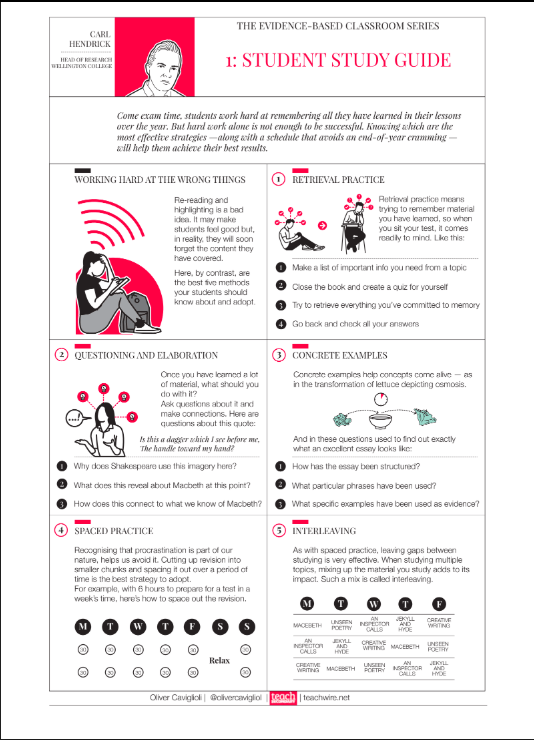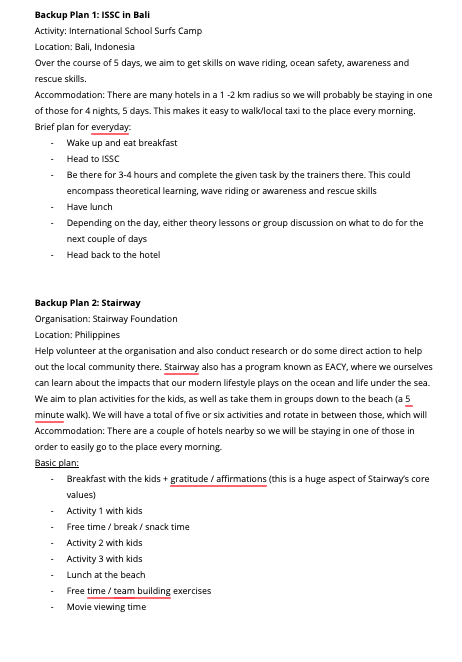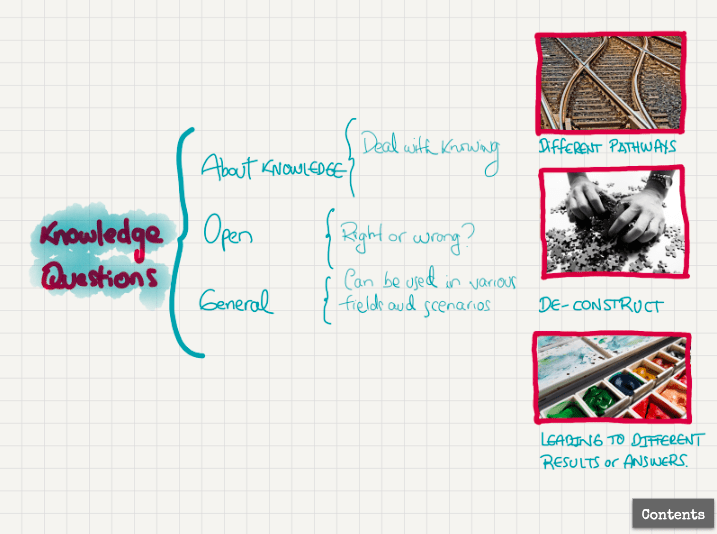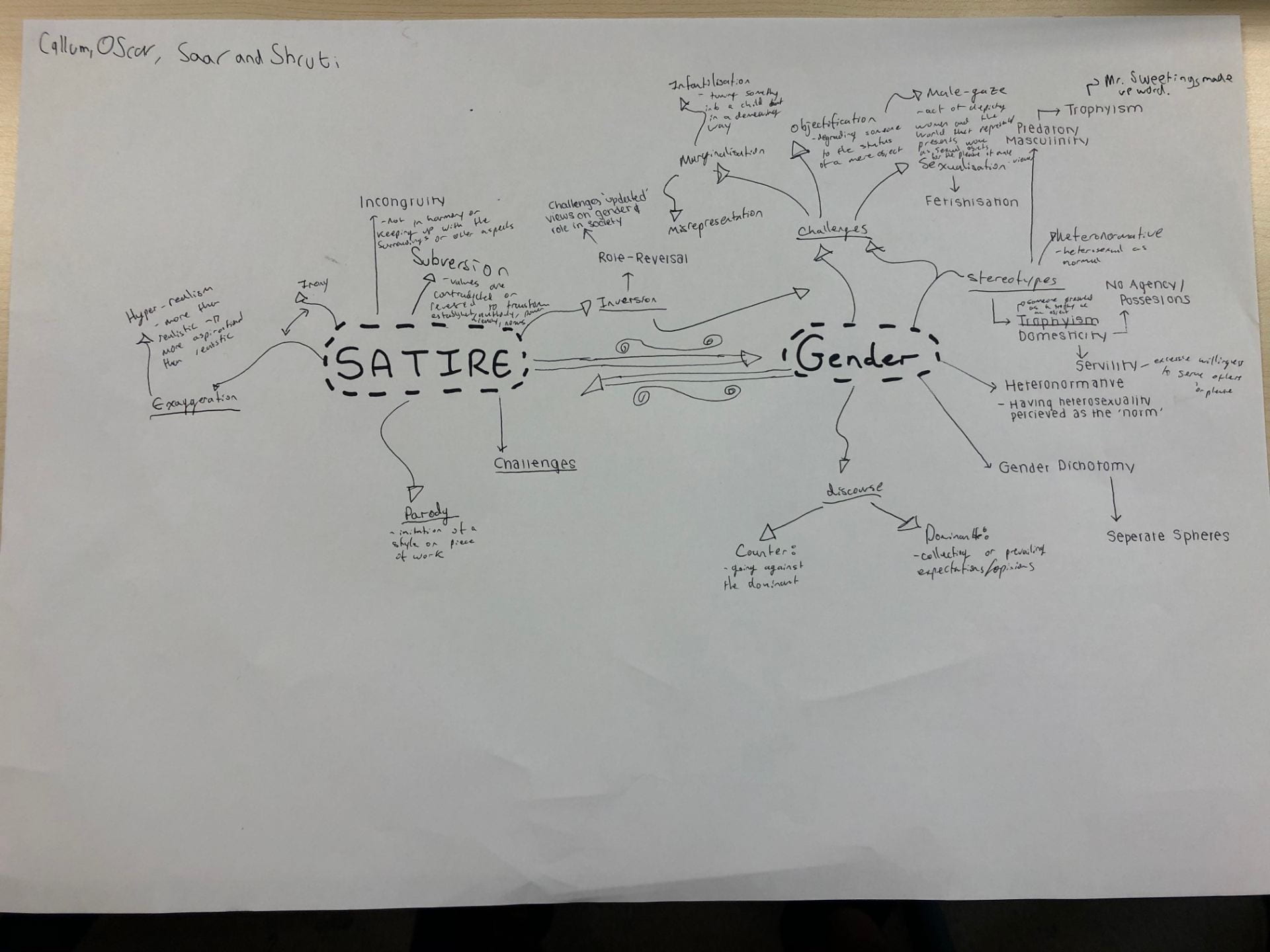First Draft
Gatsby and Paul Nash:
Extracts:
We are making a new world
Chapter 4:
‘Mr. Carraway this is my friend Mr. Wolfshiem.’ A small, flat-nosed Jew raised his large head and regarded me with two fine growths of hair which luxuriated in either nostril. After a moment I discovered his tiny eyes in the half darkness. ‘—so I took one look at him—’ said Mr. Wolfshiem, shaking my hand earnestly, ‘—and what do you think I did?’ ‘What?’ I inquired politely. But evidently he was not addressing me for he dropped my hand and covered Gatsby with his expressive nose. ‘I handed the money to Katspaugh and I said, ‘All right, Katspaugh, don’t pay him a penny till he shuts his mouth.’ He shut it then and there.’ Gatsby took an arm of each of us and moved forward into the restaurant whereupon Mr. Wolfshiem swallowed a new sentence he was starting and lapsed into a somnambulatory abstraction.
The arts and literature have in some way always been a key part in human culture around the world to represent ideas and communicate the artist or author’s perspectives to their respective audience or readers. Since the beginning of the Industrial Revolution, progress and social change have rapidly increased in a relatively short amount of time that was unseen before in all of Human History. The 20th century was perhaps an era of immense social, economic and political progress and rapid change in a relatively short period with both constructive and destructive consequences on societies. For instance, one of the most profound changes to western societies during the 20th century was the outbreak of the Great War and subsequently the advent of the Roaring Twenties or Jazz Age. War artists such as Paul Nash and influential authors like F. Scott Fitzgerald have through their choice of creative expression responded to the rapid social change during the late 1910s and 1920s that transformed society into a new era. “We are making a New World” by Paul Nash, as in many of his war landscape paintings, rejects the romanticised and heroic representations of war that dominated the norm before the 20th century in favour of more abstract, cubist inspired art to express his deep horrors of World War I that warped nature unnaturally and terrorised human emotions. The audience response was profound and was the key factor that changed the way we perceive war as an unnecessary means and even immoral at times. Similarly, Fitzgerald in The Great Gatsby expressed his condemnation for the disintegration of the American Dream in 1920s America in an era of unprecedented prosperity and consumerism of material excess. Through his response to the 1920s social change, he made his readers realise the extent of how the decayed moral and social values transformed into the empty pursuit of greed and pleasure. Although different in style, both Nash and Fitzgerald through their creative acts and their representation of certain social values, transformed the way their audience or readers saw society, shedding new light on the ever-evolving and ever-changing issues that surround our societies.
Firstly, in Nash’s “We are Making a New World” juxtaposition of the title and the brutal and destructive depiction of war in his artwork challenges the heroic portrayal of mass wars that even in today’s modern world, brings back the cruel reality of WWI. Paul nash described his paintings as feeble and inarticulate which was not referring to the limitations of his skill as an artist but rather that he was unable to properly comprehend and express the scale and intensity of not only trauma but the suffering that he and others experienced during world war. For most of the history of Western Art, the more realistic the art the better it was perceived, or at least that the skills of the artist were based on how close he could paint realistically and as close to reality as possible, even if the romanticised depiction of a landscape or figure of authority were not realistic per se. In addition, art that was displayed in art galleries had a similar theme of some romanticized version of an important figure or landscape or realistic interpretation of some still life. However, the introduction of the new art styles, such as cubism, impressionism, surrealism and other more abstract styles, challenged these century-old artworks of what most people believed was expected and what art should represent, especially the artwork or sculptures that displayed the art of Classical Greece or unmoving and breathtaking landscapes, which at the time was the norm. The art world had a rude awakening and Paul Nash’s war landscape paintings were no different from that shock. Likewise, “We are Making a New World” creates this juxtaposition because a new world implies hopefulness and new beginnings. Instead, the title gives no hint of any mutilation of a landscape instilled with horror. On the contrary, the land is warped too organically and resulting in an alienation of the landscape and the oddly liquified trees seem too unnatural to exist on earth. The rays of sunshine further contrast the title by seeming unnatural and artificial despite being the sun. The sun lossesloses it’sits warmth because these rays are straight and are white and not a warm orange or yellow that one would normally associate with the sun. The towering red hills along with the artificial sun, create a miserable and hopeless mood and atmosphere illustrating the illusion of escape or relief from the horror of war and the betrayal of nature. The landscape feels contained wthwith little space among the trees, devoid of any organic living life as the earth and once lush vegetation is reduced to mud and perhaps pools of chemicals and waste. All in all, the painting is far from a celebratory depiction of war and instead depicts utter failure in humanity. Thus all these creative elements in the painting transformed the values typically associated with war such as glory in the battlefield, the same as playing a game with friends and nobility in dying for one’s country to mass-scale destruction and nightmarish landscapes. These established beliefs have been inverted and subdued by these new abstract and revolting art styles of Paul Nash and other artists including those part of the Dada movement, to depict such an alien landscape contrasted to the romanticized beautiful and awe-inspiring landscapes showcased in art galleries before was a huge social changed and transformed the views on war. As it was commonly known, WWI was the war that ended all wars, or rather ended the public’s perceived notions of war transforming into a new truth of what war actually is.
On the other hand, F. Scott Fitzgerlad saw the mass consumerism and materialism as a result of the increase of urbanization in America, a cause to the alienation in society and away from traditional secular values (that in some cases were more preferable than the new modern values). The Great Gatsby responded to the massive social change that he saw as cynical in a way because the new modern values of endless, meaningless pleasure and greed contributed nothing to society. In chapter 4, the surrounding myths of who Gatsby is sort of revealed or at least Nicks meeting with Wolfsheim instils doubt to him that Gatbys’s virtues are perhaps not as pure as they have seemed to be. Wolfsheim is grotesquely portrayed stereotypically Jewish with the physical appearance of having a “large head’, “small” diminutive stature and his obvious greed expressed through “his expressive nose” as,” as if smelling for money. In a way, this meeting confirms in the eyes of Nick and the reader, Gatsby’s involvement with bootlegging and organised crime. This altogether is a symbolic representation of criminal activity based on stereotypes of Jews. Corruption and illegal criminal activity during the prohibition era in Fitgerald’s eyes, lead to the moral and social decay that dismantled the very idea of the social mobility in the American dream as well as the new consumerism of material excess without thought. This theme is existent throughout the novel, and later on, in Chapter 4, Wolfsheim cufflinks are perhaps the most pertinent manifestation of his corrupt nature let alone his physical description, with the human molars also reflective of death perhaps even foreshadowing the death and downfall of Gatsby. One of the underlying values of the American dream is that anyone can rise up the ranks of the social hierarchy and become satisfied and enjoying a higher standard and quality of life, given the work hard enough. However, in order to attain the American Dream, then crime needs to be involved and Gatsby, despite perhaps enjoying some elements of his illegally acquired wealth, was never fully satisfied and in the end, everything fell apart. Fitzgerald points out that the American Dream was never accessible to anyone and was only a means for the rich to stay rich. This failure in the American dream is just another byproduct of the moral decay in society in the 1920s and through a Marxist analysis view on the American Dream, was a way for the rich like Tom to stay rich by motivating the working class to work. Furthermore, this meeting with Wolfsheim leads to Gatsby’s backstory, which is finally revealed in chapter 6 later on by a reporter. It is revealed that his only true pursuit was to be with Daisy, the female embodiment of the true American along with the symbol of the green light to which Gatbsy attaches sentimental value to, the readers realise the myth of the American Dream. This is because Gatsby can never find true satisfaction was satisfaction and was never able to fully attain the American Dream. His materialistic parties (and how no one, except the owl-eyed man and Nick, further exposes the truth to the extent of moral decay in society) and his failed materialistic efforts for Daisy never resulted in the way he expected, divulges into the social decay in society. Gatsby was also a by-product of the illusion that materialism and getting rich no matter what can help one to achieve one’s goals and be happier. Wolfsheim was the first to reveal the extent of the failed illusion of the American Dream and it’s moral decay on society as Fitzgerlad saw it. Fitzgerald transformed the values in the 1920s that was thought to be prosperous and shocked the Jazz Age that all the glamorous glamorous values were a lie or at least didn’t disclose the extent of the inaccessibility of the American Dream and how it morally decayed the society. His creative effort changed the way the 1920s was perceived in an era of what most people thought was prosperous only to be short-lasting and only for the wealthy few.
In conclusion, the 20th century was an era of rapid social change and where many authors, artists and other creative individuals contributed to the widely transformed society or were a by-product of the profound social changes and were seen as a response to it. Paul Nash as a war artist expressed through his juxtaposition of an ironically optimised title, and the barren, wasted and traumatising landscape to illustrate the horrors of war on both people and nature. This brutally honest depiction of the horrors of war contrasted the heavily romanticised paintings of immobile landscapes and idealised figures that dominated the art galleries of before. Fitzgerald, on the other hand, was outraged by the American society that although shifted away from traditional values and became more urbanised and modernised, adopted the newly acquired values of greed before anything else and mindless consumption of material excess that resulted in what Fitzgerald saw as moral decay and corruption in society. This, in turn, disintegrated in the American Dream, both in terms of the values upheld by it and the facade or illusion of being able to obtain with no little to no cost despite perhaps only having a limited time of true happiness. Nash and Fitzgerald have used their creative means to transform the societal norms, expectations and values into what they saw as morally wrong or not displaying the actual truth which resulted in mixed reactions of the readers or audience through the responses to social change. Artists and writers today still respond to the ever-increasing social change through their own creative styles of its purpose being to evoke their sense of truth and right. Many artists have responded to the rise of the far-right and the ever polarisation of politics in the US and Europe, and some like Eli Rezkallah has responded to the more feminist values of modern western society today, though not actually being completely feminist through the inversion of gender roles of parodies of 1950s adverts. All in all, creativity is an impactful and inspirational way to transform society and to respond to the change in societal values.
Revised Draft:
The arts and literature have always been a key part in human culture around the world, used to represent ideas and communicate the artist or author’s perspectives to their respective audience or readers. The pace of social change and progress was unseen in the 20th century in an era of immense social, economic and political change resulting in constructive and destructive consequences on societies. The outbreak of the Great War and subsequently the advent of the Roaring Twenties or Jazz Age were one of the most profound changes to western societies. War artists such as Paul Nash and influential authors like F. Scott Fitzgerald have through their choice of creative expression responded to the rapid social change during the late 1910s and 1920s that transformed society into a new era. “We are making a New World” by Paul Nash, as in many of his war landscape paintings, rejects the romanticised and heroic representations of war that dominated the norm before the 20th century in favour of more abstract, cubist inspired art to express his deep horrors of World War I that warped nature unnaturally and terrorised human emotions. The audience response was profound and was the key factor that changed the way we perceive war as an unnecessary means and even immoral at times. Similarly, Fitzgerald in The Great Gatsby expressed through his creative work, his condemnation for the disintegration of the American Dream in 1920s America in an era of unprecedented prosperity and consumerism of material excess. Through his response to the 1920s social change, he made his readers realise the extent of how the decayed moral and social values transformed into the empty pursuit of greed and pleasure. Although different in style, both Nash and Fitzgerald through their creative acts and their representation of certain social values, transformed the way their audience or readers saw society, shedding new light on the ever-evolving and ever-changing issues that surround our societies.
Firstly, Nash in many of his paintings created a juxtaposition of the title and the brutal and destructive depiction of war in his artwork challenges the heroic portrayal of mass wars that even in today’s modern world, brings back the cruel reality of WWI. Paul Nash described his paintings as feeble and inarticulate which was not referring to the limitations of his skill as an artist but rather that he was unable to properly comprehend and express the scale and intensity of not only trauma but the suffering that he and others experienced during world war (Tate). For most of the history of Western Art, the more realistic and romanticised depictions the art was, the better it was perceived. However, the introduction of the new art styles, such as cubism, impressionism, surrealism and other more abstract styles, challenged these century-old artworks of what most people believed was expected and what art should represent. The art world had a rude awakening and Paul Nash’s war landscape paintings were no different from that shock. Likewise, “We are Making a New World” creates this juxtaposition because a new world implies hopefulness and new beginnings. Instead, the title gives no hint of any mutilation of a landscape instilled with horror. On the contrary, the land is warped too organically and resulting in an alienation of the landscape and the oddly liquified trees seem too unnatural to exist on earth. Painting the rays of the sun using a cool white rather than the usual warm yellows or oranges, Nash gives them an attenuated feeling, almost as if they have become unnatural. The towering red hills along with the artificial sun, create a miserable and hopeless mood and atmosphere illustrating the illusion of escape or relief from the horror of war and the betrayal of nature. Nash’s use of composition makes the landscape feels contained with little space among the trees, devoid of any organic living life as the earth and once lush vegetation is reduced to mud and perhaps pools of chemicals and waste. All in all, the painting is far from a celebratory depiction of war and instead depicts utter failure in humanity. Thus all these creative elements in the painting transformed the values typically associated with war such as glory in the battlefield, the same as playing a game with friends and nobility in dying for one’s country to mass-scale destruction and nightmarish landscapes. These established beliefs have been inverted and subdued by these new abstract and revolting art styles of Paul Nash and other artists including those part of the Dada movement, to depict such an alien landscape contrasted to the romanticized beautiful and awe-inspiring landscapes showcased in art galleries before was a huge social changed and transformed the views on war. As it was commonly known, WWI was the war that ended all wars, or rather ended the public’s perceived notions of war transforming into a new truth of what war actually is.
On the other hand, F. Scott Fitzgerlad saw the mass consumerism and materialism as a result of the increase of urbanization in America, a cause to the alienation in society and away from traditional secular values (that in some cases were more preferable than the new modern values). The Great Gatsby responded to the massive social change that he saw as cynical in a way because the new modern values of endless, meaningless pleasure and greed contributed nothing to society. In chapter 4, the surrounding myths of who Gatsby is sort of revealed or at least Nick’s meeting with Wolfsheim instils doubt to him that Gatbys’s virtues are perhaps not as pure as they have seemed to be. Fitzgerald’s grotesque characterisation of Wolfsheim portrays him as stereotypically Jewish with the physical appearance of having a “large head’, “small” diminutive stature and his obvious greed expressed through “his expressive nose,” as if smelling for money. In a way, this meeting confirms in the eyes of Nick and the reader, Gatsby’s involvement with bootlegging and organised crime. This altogether is a symbolic representation of criminal activity based on stereotypes of Jews. In Fitzgerlad’s eyes, everyone was culpable because everyone turned a blind eye to the whole situation along with corruption and illegal criminal activity during the prohibition era, leading to the moral and social decay that dismantled the very idea of the social mobility in the American dream as well as the new consumerism of material excess without thought. This theme is existent throughout the novel, and later on, in Chapter 4, Wolfsheim cufflinks are perhaps the most pertinent manifestation of his corrupt nature let alone his physical description, with the human molars also reflective of death perhaps even foreshadowing the death and downfall of Gatsby. One of the underlying values of the American dream is that anyone can rise up the ranks of the social hierarchy and become satisfied and enjoying a higher standard and quality of life, given the work hard enough. However, in order to attain the American Dream, then crime needs to be involved and Gatsby, despite perhaps enjoying some elements of his illegally acquired wealth, was never fully satisfied and in the end, everything fell apart. Fitzgerald points out that the American Dream was never accessible to anyone and was only a means for the rich to stay rich. This failure in the American dream is just another byproduct of the moral decay in society in the 1920s and through a Marxist analysis view on the American Dream, was a way for the rich like Tom to stay rich by motivating the working class to work. Furthermore, this meeting with Wolfsheim leads to Gatsby’s backstory, which is finally revealed in chapter 6 later on by a reporter. It is revealed that his only true pursuit was to be with Daisy, the female embodiment of the true American along with the symbol of the green light to which Gatbsy attaches sentimental value to, the readers realise the myth of the American Dream. This is because Gatsby can never find true satisfaction and was never able to fully attain the American Dream. His materialistic parties (and how no one, except the owl-eyed man and Nick, further exposes the truth to the extent of moral decay in society) and his failed materialistic efforts for Daisy never resulted in the way he expected, divulges into the social decay in society. Gatsby was also a by-product of the illusion that materialism and getting rich no matter what can help one to achieve one’s goals and be happier. Wolfsheim was the first to reveal the extent of the failed illusion of the American Dream and it’s moral decay on society as Fitzgerlad saw it. Fitzgerald transformed the values in the 1920s that was thought to be prosperous and shocked the Jazz Age that all the glamorous values were a lie or at least didn’t disclose the extent of the inaccessibility of the American Dream and how it morally decayed the society. His creative effort changed the way the 1920s was perceived in an era of what most people thought was prosperous only to be short-lasting and only for the wealthy few.
In conclusion, the 20th century was an era of rapid social change and where many authors, artists and other creative individuals contributed to the widely transformed society or were a by-product of the profound social changes and were seen as a response to it. Paul Nash as a war artist expressed through his juxtaposition of an ironically optimised title, and the barren, wasted and traumatising landscape to illustrate the horrors of war on both people and nature. This brutally honest depiction of the horrors of war contrasted the heavily romanticised paintings of immobile landscapes and idealised figures that dominated the art galleries of before. Fitzgerald, on the other hand, was outraged by the American society that although shifted away from traditional values and became more urbanised and modernised, adopted the newly acquired values of greed before anything else and mindless consumption of material excess that resulted in what Fitzgerald saw as moral decay and corruption in society. This, in turn, disintegrated in the American Dream, both in terms of the values upheld by it and the facade or illusion of being able to obtain with no little to no cost despite perhaps only having a limited time of true happiness. Nash and Fitzgerald have used their creative means to transform the societal norms, expectations and values into what they saw as morally wrong or not displaying the actual truth which resulted in mixed reactions of the readers or audience through the responses to social change. Artists and writers today still respond to the ever-increasing social change through their own creative styles of its purpose being to evoke their sense of truth and right. Many artists have responded to the rise of the far-right and the ever polarisation of politics in the US and Europe, and some like Eli Rezkallah has responded to the more feminist values of modern western society today, though not actually being completely feminist through the inversion of gender roles of parodies of 1950s adverts. All in all, creativity is an impactful and inspirational way to transform society and to respond to the change in societal values.
Source:
https://www.tate.org.uk/whats-on/tate-britain/exhibition/paul-nash/context-comment/articles/paul-nash-war-artist

